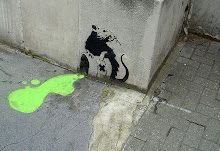 |
| Structure of an IgG2 antibody |
And it's often not a very effective method. You have to have many different rabbits to get one somewhat decent antibody. And even if you do eventually end up with a monoclonal antibody, it still isn't that reliable, as the existence of a antibody validation site like AntibodypediA shows.
Work is being undertaken to change both the unreliability and the animal welfare impact of antibodies. An article I read recently shows that while this research is still in early stages, it is getting results. The researchers vary a protein sequence using a computer database, and then select for binding efficiency with a column. The proteins are presented on a phage, which being a biological system can add to genetic variation on its own and thus improve selection.
It also reminded me of work being done with antivenoms (or antivenins depending on which flavor of English you speak). Currently antivenoms are obtained by raising poisonous animals, be they snakes, anthropods, or whatever. A dangerous occupation, as I saw first (severely scarred) hand on a recent trip to the สถานเสาวภา Queen Saovabha Memorial Institute snake farm. The venom is diluted and injected into large animals. In Thailand they mentioned using elephants, but outside of the tropics horses are often used, and more recently, sheep. The antivenom is basically an antibody to the venom.
Besides the above-mentioned issues with antibodies in general, antivenoms also have the trouble of causing immune responses in the afflicted individuals: Both to the antivenoms and to unrelated serum proteins in the antivenom dose.
The positive aspect of antivenoms-as-antibodies is that they generally do not change over time, as selective pressure is very low. That means that once one has a good antivenom, it will work for a long time before having to be re-engineered. Once you have a good binding site, you can make a synthetic antibody containing just the ends of the short and long chains, and replace the rest if the antivenom with something that doesn't produce anaphylaxis.
AntibodypediA
The Importance of Being Tyrosine: Lessons in Molecular Recognition from Minimalist Synthetic Binding Proteins. ACS Chem. Biol., 2009, 4 (5), pp 325–334; Publication Date (Web): March 19, 2009





